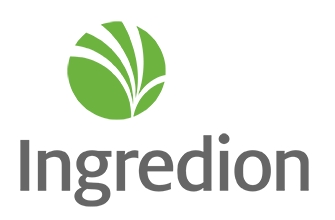The gluten-free category is constantly in flux. Although people with celiac disease have always had a necessity to turn to the category for grain-centric snack products and baked goods, there are many who maintain an interest in eating gluten-free for other reasons. And sales of snack and bakery products labeled as “gluten-free” continue to climb.

Grains go gluten-free
As the gluten-free category continues to mature, grain suppliers have helped bring more flavor and nutritional diversity to the table.
“Shoppers are seeking more nutrient-dense snacks with cleaner labels, and our products fit nicely with these trends,” says Chris Krenzel, director of sales, Firebird Artisan Mills, Harvey, ND. “Ancient grains continue to be a source of inspiration for a lot of gluten-free product developers looking to add nutritive value.”
So-called “ancient” grains have helped fuel creativity. “Over the past few years, we’ve seen ancient grains grow in popularity with consumers who are using them as gluten-free substitutes in baked goods and snacks,” says Christine Cochran, executive director, Grains Food Foundation, Washington, D.C. “Ancient grains such as quinoa, buckwheat and chia are more familiar to consumers today and are naturally gluten-free.”
According to Cochran, these types of grains offer a variety of essential nutrients that most gluten-free diets exclude, too, such as dietary fiber.
“Grains have definitely made advancements as consumers have embraced ancient grains not normally found in baking and snack food production,” says Catherine Barry, director of marketing, National Honey Board, Firestone, CO. “Many of these grains can be used in gluten-free production, but they may lack some of the functionality and flavor of traditional flours. That’s why an ingredient such as honey plays an important role in gluten-free product development.”
Barry explains that if a baker or snack producer is using non-traditional ingredients, the ingredients’ flavor or functionality might negatively impact the finished product. A sweetener such as honey, however, can mask any off-flavors, naturally extend shelf life, and provide an improved mouthfeel—and it adds a natural touch of familiarity to the label.
But as we grow more accustomed to diverse grains, we better understand their benefits. “Teff and sorghum, in particular, pack a good deal of protein with low sugar,” suggests Krenzel. “Lentils are starting to see resurgence, since they’re great for adding protein and texture. We’re also seeing more vegetable- and fruit-based projects, as well as milled seeds, for gluten-free and allergen-free applications.”
The next phase
Consumers want more than just a gluten-free product these days: They want a product that tastes good in all aspects, including texture, mouthfeel, and of course, flavor.
“There is a great deal of research to improve the texture and, in some cases, taste, of gluten-free breads,” says Cochran. “Ultimately, the hope is to create breads and products that are very similar in taste and texture to traditional wheat products.”
Cochran adds that manufacturers have also shown an awareness and commitment to providing gluten-free products with improved nutrient profiles to help celiacs who are deficient in essential nutrients found in wheat products, including fiber, calcium and magnesium.
“Nutrient deficiencies are common for the celiac community, and we’ve seen companies help combat this issue through product development,” continues Cochran.
“Ten years ago, a gluten-free cookie was a success if it sort of tasted ‘cookie-like.’ Today, chefs are not only able to create delicious gluten-free versions of beloved items, they’re able to create items that are beautiful and flavorful in their own right,” says Krenzel. “People are much more comfortable working with gluten-free, and it shows in their passion for creating spectacular food.”
Using honey in gluten-free breads can help build flavor while improving functionality. “Using honey is one of the best ways a baker can develop a gluten-free bread that resembles a traditional loaf,” says Barry, citing the benefits of honey’s moisture content and ability to round out a flavor profile.

Affordable and gluten-free
According to Mintel, Chicago, retail sales of gluten-free foods are up, specifically for energy bars and snacks.
Billy Roberts, senior food and drink analyst, Mintel, cites the duo of health benefits and gluten-free claims as a driver of energy bar sales. “The snacks segment includes a variety of naturally gluten-free products, potato chips and popcorn among them, which continue to drive sales,” he says.
Customers are looking for products bearing “free-from” claims, Roberts continues— trend fueled by gluten-free. Roughly one in eight of 2016’s new bakery products had a “free-from” claim.
It’s also getting lighter on the wallet to purchase healthier gluten-free, particularly due to the increase of private label offerings. Currently, over one-third of consumers believe gluten-free foods are more affordable than they used to be, reports Mintel. Less-expensive store brand and private label options in the category could play a role in swaying opinions for people on the fence about gluten-free.
“Considering the perception that gluten-free’s affordability mirrors consumption levels by household income, these more competitively priced options may well open the gluten-free market even further,” says Roberts. “Many of these store brand options are delivering on other ‘free-from’ claims and delivering other potential selling points for consumers at all income levels.”
New offerings
Snacks are doing well in the gluten-free market, and breads aren’t looking too shabby, either.
“According to SPINS data, sales of shelf-stable chips, pretzels and snacks labeled gluten-free grew 26 percent from 2015 to 2016,” says Krenzel. “The next-highest snack and bakery growth category was wellness bars and gels, up over 25 percent.”
Barry suggests that although all snack categories are seeing growth, breads and buns are doing exceptionally well, with the opportunity to expand and innovate. “We’re seeing growth in all baking and snack categories, with breads and buns being the core categories where we see significant growth opportunities and product innovation,” she says.
Snack foods continue to stand out as category leaders, as well. “Salty snacks, crackers and snack bars continue to be leaders in new gluten-free product offerings,” says Shelley Case, R.D., scientific advisory board member, Grain Foods Foundation, and author of “Gluten Free: The Definitive Resource Guide.”
Case continues: “There is a growing trend to incorporate nutritious ingredients such as pulses, nuts, seeds, gluten-free oats and ancient grains into a wide array of products in these categories. Another notable gluten-free offering is the increasing variety of items featuring gluten-free oats, ranging from hot and cold cereals, granola, snack bars, cookies and other baked products.”
According to Mintel Global New Products Database data, notable gluten-free private label snacks that have hit the market include:
- ALDI Journey to ... Greece Rosemary & Feta Kettle Chips
- ALDI live G free Jalapeño Jack Ancient Grain Crackers
- ALDI SimplyNature Roasted Red Pepper Brown Rice Crackers
- Costco Kirkland Signature Sahale Snacks Cashew Pistachio Nut Crisp snack mix
Walmart offers Gluten Free Cocoa Sandwich Cookies under its Great Value store brand. The 10.6-oz. pack also bears the National Foundation for Celiac Awareness logo on its packaging. Whole Foods Market offers dozens of gluten-free baked goods, including muffins, cakes, pies, cupcakes, biscuits, scones and breads, under its GlutenFree Bakehouse store brand.
Even convenience retailers like 7-Eleven are getting involved in the gluten-free store brand market. The global chain recently released 7-Select Macadamia Nut Caramel Popcorn Clusters in a resealable, stand-up pouch‚ a product touted as “100% natural” and gluten-free. It retails in a 4-oz. pack.
On the branded side, TH Foods offers gluten-free Crunchmaster Multigrain Crisps, as well as lines of Multi-Seed Crackers and 7 Ancient Grains Crackers.
And in desserts, noted free-from producer Better Bites Bakery, found at many Whole Foods Market locations, has released All Joy No Worries! Mostess Mini-Cupcakes, mini chocolate cupcakes with a coconut-cream filling, dipped in a chocolate ganache. They look remarkably familiar, but are free of all major seven food allergens.
“Manufacturers are taking notice of trends and customers’ comfort with gluten-free ingredients,” Cochran says. “This shift opens the door for new products and foods for the gluten-free community.”













